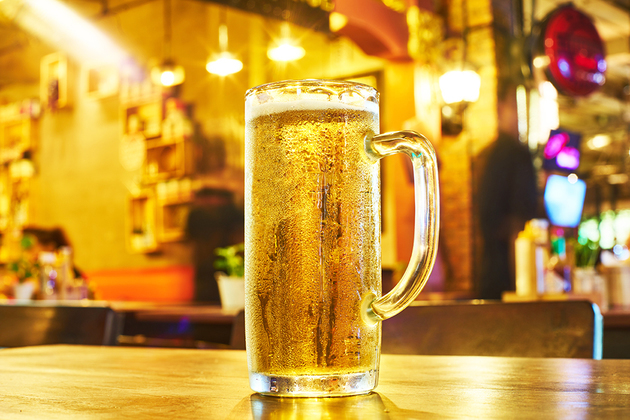Jan. 19 (NBD) -- Earlier this year, China's leading brewers announced plans to raise beer prices in tandem for the first time in a decade.
Industry insiders told NBD that the price hike is driven by rising production costs as well as consumption upgrade and industrial structure adjustment.
Beer makers announce price increase in succession
In early January, China Resources Beer (Holdings) Company Limited (hereafter referred to as "CR Beer"), whose flagship brand "Snow" has become the largest beer brand by volume in the Chinese market since 2008, announced that to cope with the intensifying cost pressure, it will increase prices of nine products by 2-10 yuan (0.3-1.6 U.S. dollars) per bottle, representing a rise of around 10-20 percent.
The price adjustment is expected to start from east China's Zhejiang province. A research report by SinoLink Securities says that CR Beer holds up to 50 percent market share in the coastal province, giving the company the ability to raise prices.
Tsingtao Brewery, China's second largest beer company, also seeks to increase prices of some products in some regions by "an average of no more than 5 per cent" to offset rising packaging and production cost.
In fact, as early as December last year, Chongqing Brewery Co., Ltd., a member of internationally renowned beer brewer Carlsberg Group, and another leading beer company Yanjing Brewery announced the price rise.
Guosen Securities, a Chinese state-owned financial services company headquartered in Shenzhen, said that the price increase is a test for market reaction before the arrival of the peak season. The adjustments mainly involve markets like Zhejiang and Beijing, where beer companies can minimize the possibility of sales drop by virtue of the consumption inertia and brand reliance of local consumers.
Meanwhile, beer products affected are mostly medium/low-range lines. As for the high-end products, breweries will more likely increase their prices indirectly, such as by changing their packages.

Photo/PEXELS
Surging costs a major driver
This is the first extensive price rise by leading brewers in China over past 10 years.
The root cause is that Chinese breweries are feeling the pain of a rapid rise in the production cost.
Barley, the main raw materials for beer production, saw a price jump of about 10 percent in recent two years. Packaging materials, which account for the lion's share of the total costs of beer products, also experienced a substantial surge in prices, adding to beer makers' operating stress, according to a research report issued by Minsheng Securities in January.
Meanwhile, the consumption upgrading trend and premium effects brought by the adjustment of product structure and upgraded demand encourage beer producers to lift prices.
An industry insider told NBD that unlike liquor brands with a high level of personality and exclusivity, beer products could be easily replaced due to homogenization. In such a case, Chinese beer companies used to slash prices to grab market share.
This, on the one hand, led to an industry reshuffle, with a number of small/medium-sized enterprises having vanished from the market amid the rising cost pressure. On the other hand, it dragged down the profitability of beer companies and even the entire industry, impelling brewers to adjust their product structure and move towards to the medium/high-end segment in recent years. Lifting prices is just one of the measures to burnish profit margins, the industry insider explained.
Moreover, a series of grand sports events like the FIFA World Cup will be held this year, mostly in summer. Beer makers will be under huge pressure due to the skyrocketing marketing expenses. This also propels them to raises prices to ease the burden.
Too early to say the beer industry reaches inflection point
Northeast Securities pointed out that driven by the industry-wide price rise and upgrading of product structure, plus the recovery of beer output, the Chinese beer industry is expected to see a jump in both sales volume and revenue.
Beer expert Fang Gang told NBD that the beer industry is likely to encounter an inflection point, mainly reflected in prices and profits because of the stable market pattern.
He Yong, executive deputy secretary-general of the China Alcoholic Drinks Association and secretary-general of the Association's beer branch, however, didn't agree with him.
He said that the domestic beer industry suffered a lot from simplicity and homogenization in recent years. This urges top beer makers to optimize product structure and improve added value, the result of which still awaits a quantum leap.
As the beer market is approaching saturation, beer companies should focus on improving product quality and structure and raise prices to win over customers and to increase profits, the above-mentioned industry insider noted.
Email: lansuying@nbd.com.cn


 川公网安备 51019002001991号
川公网安备 51019002001991号





